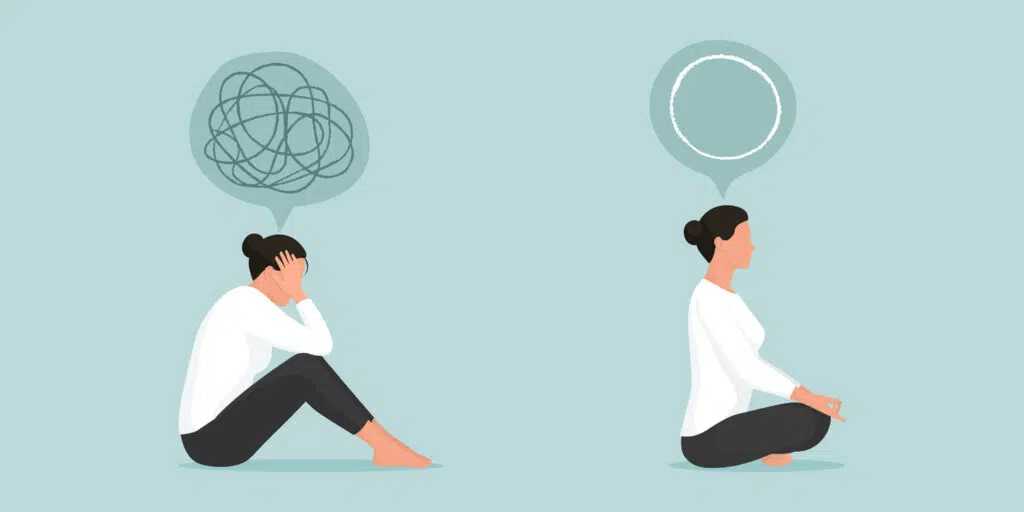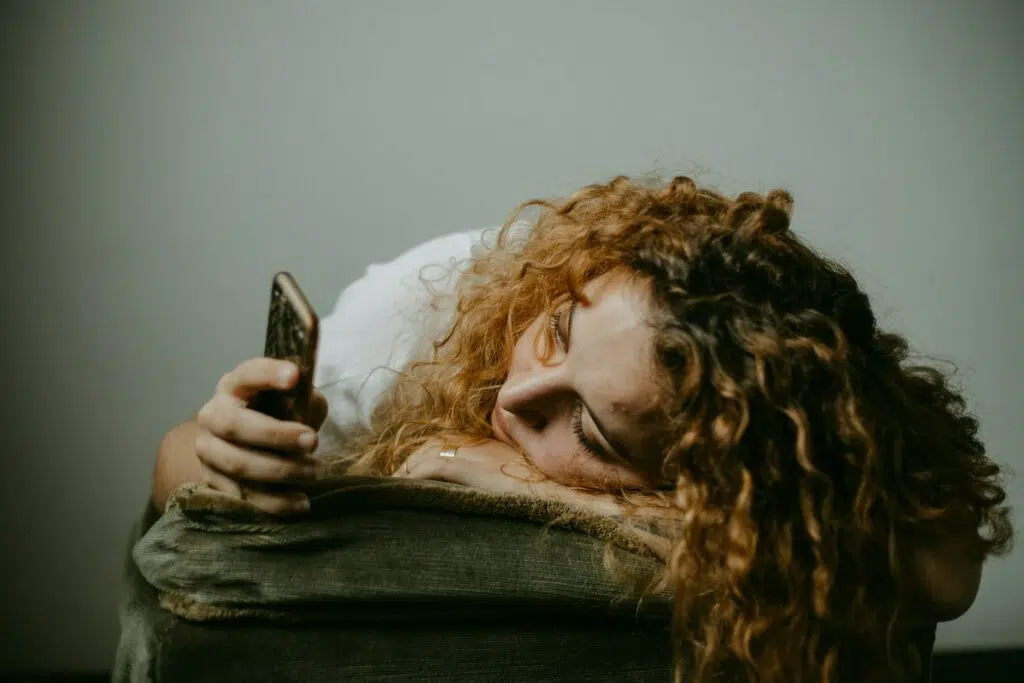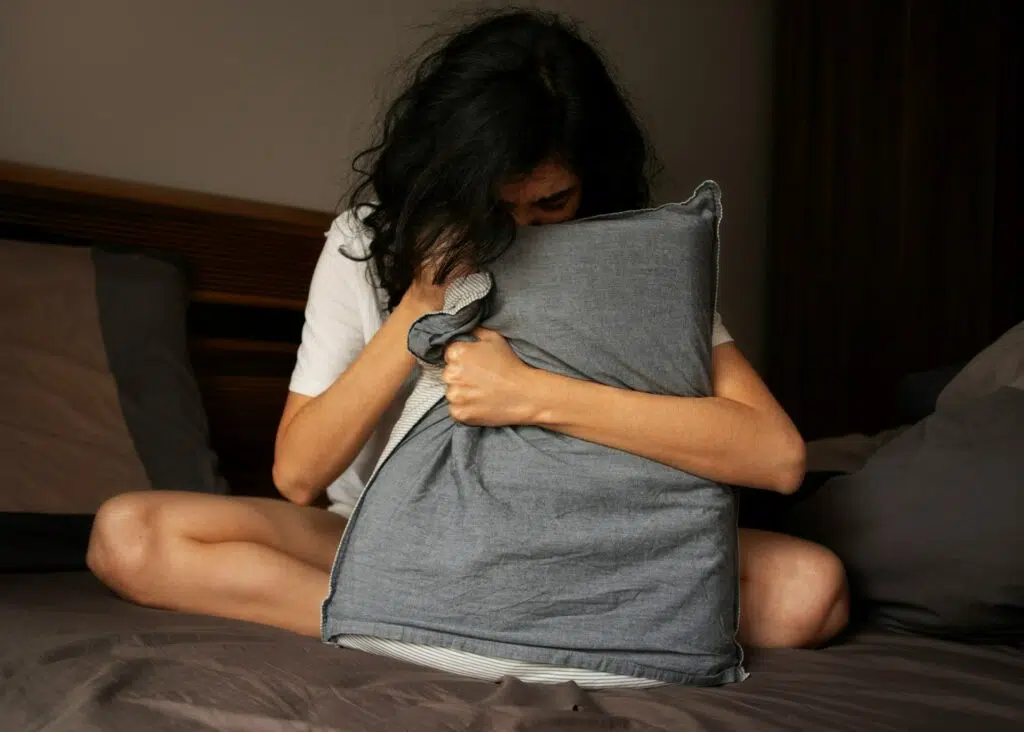Calming Techniques for Everyday Anxiety

If you are feeling anxious, calming techniques help you feel more in control and calmer. Relaxation skills can help you regain your focus, slow your breathing, think more rationally, and reduce your anxiety in the moment.
Understanding Everyday Anxiety
Anxiety is a normal human emotion that many of us experience from time to time. We experience many life events that can make us feel anxious. This could be a job interview, work deadline, or moving to a new city. Anxiety becomes a problem when it’s constant and over seemingly harmless things. An untreated anxiety disorder can feel like it’s taking over.
Calming techniques can help to manage anxiety, reduce the impact anxiety has on you, and improve your overall well-being. Learning to calm anxiety and reduce stress can help you to cope more effectively when those feelings do arise. If you feel that rush of anxiety coming, finding calming techniques that work for you can help you hold it together and feel back in control.
Know that if you find you’re struggling to manage anxiety on your own or calming techniques are just not working for you, it’s important to speak with a mental health professional. They can help you create a treatment plan specifically for your individual needs.
Calming Breathing Exercises
When someone tells you to take a slow, deep breath when you’re feeling worked up and anxious, it’s easy to dismiss it. But there’s a reason why deep breathing can help you to feel calmer.
Deep breathing activates a part of the nervous system called the parasympathetic nervous system. This sends a message to your brain that lets you know you’re OK, it’s safe, and there’s no danger to worry about. As your breathing slows down, your heart rate comes back down, and it helps to reduce feelings of anxiety and panic.
Deep breathing is a cornerstone of many body and mind relaxation techniques. It’s something that anyone can do from anywhere for free.
Here are some calming breathing exercises to try:
- Diaphragmatic breathing: Close your eyes, take deep, slow breaths so your belly pops out, and hold for a few seconds. Then, let your breath out as slowly as you can.
- Alternate nostril breathing: Take a deep breath while closing one nostril with your thumb, and breathe out. Repeat using your ring finger to close the other nostril.
- 4-7-8 breathing: Take a deep breath for 4 seconds, hold it for 7 seconds, and exhale for 8 seconds. Focus on taking deep breaths so your belly gets bigger, not your chest.
Mindfulness Techniques to Reduce Stress
Mindfulness is a form of meditation that helps you be present and fully aware of your thoughts and feelings without judgment. Calming techniques come in many forms, and mindfulness is another strategy you can add to your anxiety toolkit.
Here are some ways you can become more mindful and start using mindfulness to manage stress and anxiety:
- Walking meditation: Go somewhere quiet where you can walk up and down. Walk slowly, paying attention to the sensations you feel as you stand and move slowly. When you reach the end of the path, turn back and continue to be aware of your body, thoughts, and feelings in the moment.
- Guided meditation: You will be directed through a meditation and asked to focus on certain imagery, breathing, and other grounding techniques.
- Body scan meditation: Lie down and, starting from your feet, focus on how your body feels and the emotions you associate with each body part.
You can start using simple mindfulness techniques at home by setting aside 10 minutes of your day. For guided meditations, tips, and how-tos, try using an app like Calm or Headspace or visiting a local meditation class.
Progressive Muscle Relaxation
Research consistently shows that progressive muscle relaxation can help reduce stress and anxiety in adults. Progressive muscle relaxation is a calming technique designed to reduce stress and tension. In the short term, it helps to relax each muscle, but over time, it can help you manage and release tension before it overwhelms you.
Here’s how to do it:
- Find a quiet and comfortable spot to lie down or sit.
- Inhale and contract one muscle group, like your biceps, for 5-10 seconds and then release all the tension.
- Have a 10-20 second break, then move on to the next muscle group.
- Gradually work through your body’s muscle groups, contracting, relaxing, and releasing the tension.
How Physical Activity Can Help
When you work out, you release feel-good endorphins, natural brain chemicals that provide a sense of well-being. Exercise can also be a positive distraction from your worries and really take your mind away from negative thought cycles.
Regular exercise is essential for self-care and physical and mental health. Studies show that exercise significantly reduces anxiety symptoms. Exercise can also help improve sleep and concentration and help you cope better with difficult emotions and experiences.
Try running to clear your mind and breathe in some fresh air, a 10-minute brisk walk, a dance class, or a bike ride to get your body moving.
Balancing Expectations and Well-Being
It’s impossible to do everything perfectly without mistakes in all areas of your life. There will likely be unexpected curveballs or situations that make you feel stressed and anxious. By looking after your mental, physical, and emotional well-being, you can create more space for self-care and know you’re ready to handle problems when they occur.
The stark difference between expectations and reality can create a lot of anxiety. Think about how you can manage your expectations, like setting realistic expectations, practicing mindfulness, or learning to be more adaptable and flexible.
Long-Term Strategies for Anxiety Relief
While you can’t get rid of anxiety altogether, you can learn to accept and manage it. Long-term strategies for anxiety relief involve finding the techniques that work for you to make you feel calmer and in control, as well as reduce the impact anxiety symptoms have on your life. Some studies suggest that even chewing gum may help increase alertness and decrease anxiety.
Here are some long-term strategies to help manage anxiety:
- Mindfulness-Based Practices: Meditation and yoga help you focus on the present moment and reduce overthinking and anxiety.
- Relaxation Techniques: Progressive muscle relaxation and deep breathing can help you feel calmer, ease the body’s fight-or-flight stress response, and reduce anxiety symptoms.
- Therapy: Cognitive behavioral therapy (CBT) is generally considered highly effective for most individuals with an anxiety disorder.
- Regular Exercise: Moving your body helps boost mood, improve well-being, and manage stress.
- Social Support: Being around people you are connected to can provide a sense of belonging and offer a buffer against anxiety.
When to Contact Thriving Center of Psychology
When anxiety is persistent and getting in the way of your life, it’s a problem. Many of us experience anxiety from time to time, but if you find that you’re in a constant state of worry or self-care strategies just aren’t working for you, it could be time to speak with a therapist. If your anxiety is affecting your work, relationships, or well-being, a mental health professional can help you unpack your emotions and teach you healthier coping mechanisms.
At Thriving Center of Psychology, our experienced and compassionate therapists can provide personalized support and evidence-based treatments to help you manage your anxiety, so you can start to feel more in control. Contact us today to schedule a consultation.

The Link Between Social Media and Depression
In today’s world, scrolling through social media is as routine as brushing our teeth. We open apps out of habit — on the train, in bed, while waiting in line. Platforms like Instagram, TikTok, and Facebook keep us connected, informed, and entertained.

Signs Depression is Taking a Toll on Your Relationship
Depression can impact every part of a person’s life, from their work to their romantic relationships. Dealing with depression can take its toll on both the person with depression and the supporting partner. If you’re worried that depression is affecting your relationship, understanding its impact is an important first step.

Anxiety Attack and Panic Attack Differences
’s easy to mix up anxiety and panic attacks. While anxiety attacks and panic attacks do have overlapping symptoms, they are different. Let’s get into the differences between anxiety and panic attacks so you can be in a better position to get the help you need.

How to Overcome Procrastination and Anxiety
Procrastination is a very typical human experience. At some point or another, we’re all guilty of putting off that task we know is important. Maybe it’s household chores, filling your taxes, paying bills, or some other mind-numbingly boring task.

